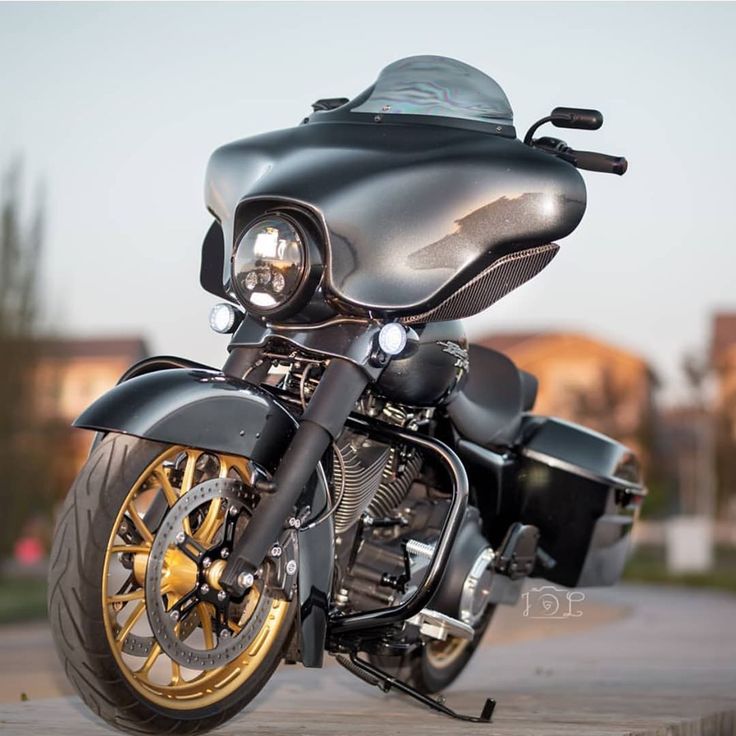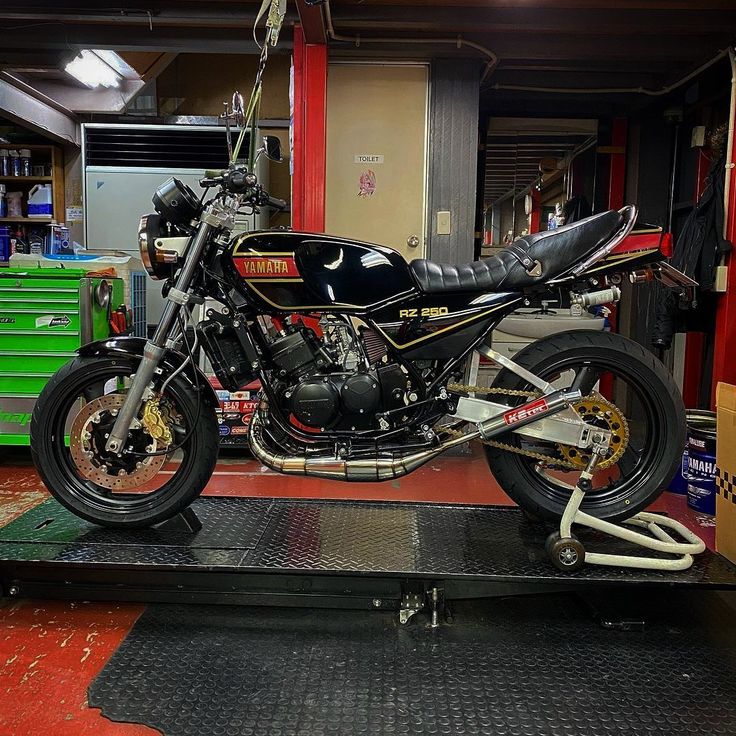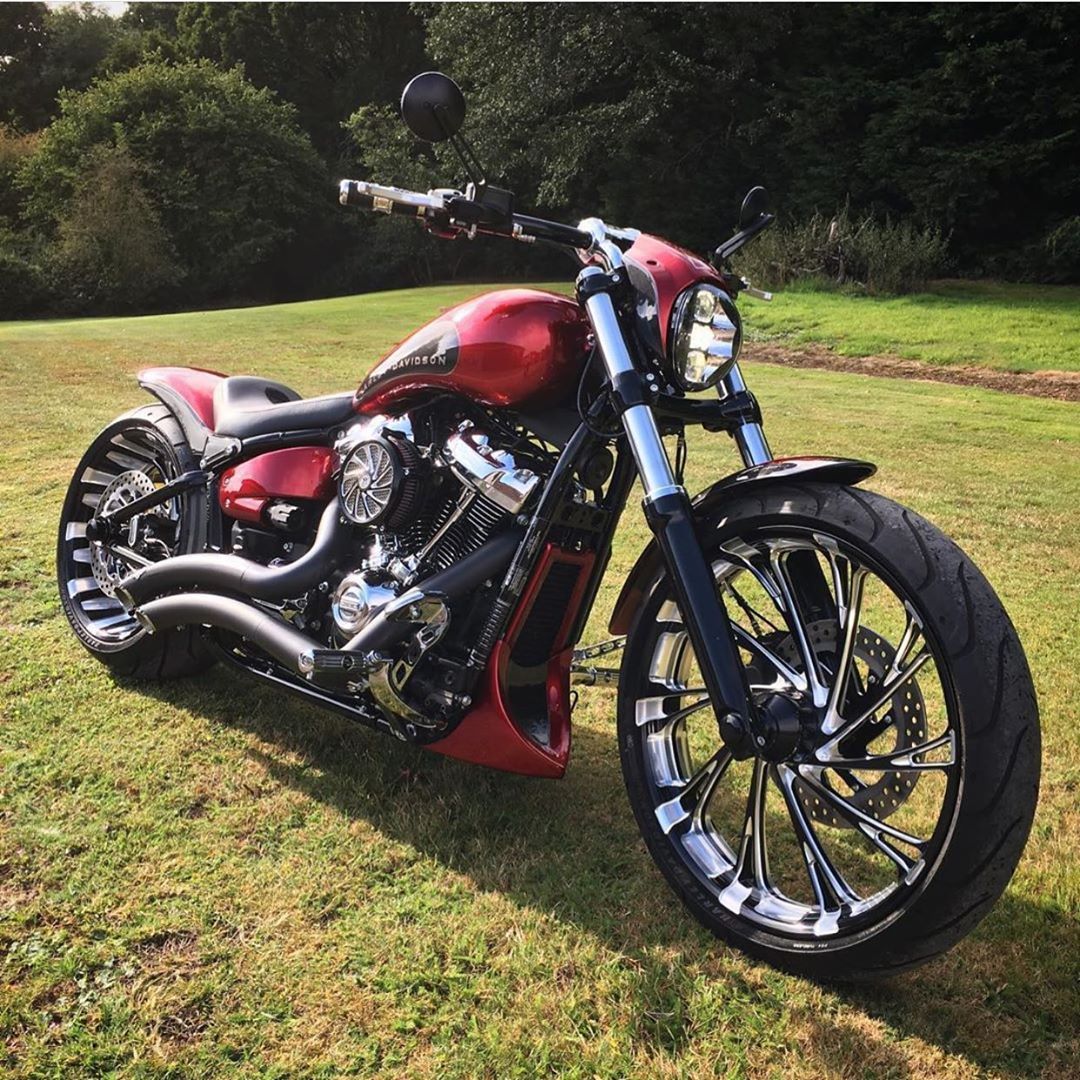In the relentlessly evolving world of automotive engineering, the pursuit of speed remains a primal, unyielding force. While the automobile has transformed from a mere mode of transport to an extension of personal identity and technological prowess, the segment dedicated to performance machines stands as a testament to humanity’s desire to push boundaries. These aren’t just vehicles; they are meticulously crafted marvels designed to dominate tracks, conquer terrains, and redefine the very essence of rapid motion. This article delves into how these cutting-edge automotive creations are setting new benchmarks for speed, exploring the intricate blend of engineering, design, and innovation that propels them forward.
The Genesis of High Performance
The concept of a “performance machine” isn’t new. From the earliest days of motoring, enthusiasts sought to make their vehicles faster, more powerful, and more agile. This quest for enhanced capability led to innovations like multi-cylinder engines, advanced suspension systems, and aerodynamic bodywork. Early races, such as the Grand Prix and endurance challenges, became the proving grounds for these nascent performance vehicles, pushing manufacturers to innovate at an accelerated pace.
Over the decades, this drive intensified. The mid-20th century saw the rise of iconic muscle cars, epitomizing raw power and straight-line speed. Concurrently, European marques honed their craft in precision engineering, focusing on handling dynamics and sophisticated powertrains. This dual evolution laid the groundwork for the diverse landscape of performance machines we see today, from purpose-built hypercars to highly capable sports sedans and even off-road beasts that defy expectations.
Engineering for Exhilaration: Key Pillars of Performance
Achieving blistering speeds and superlative handling isn’t a singular feat; it’s the culmination of countless engineering disciplines working in harmony. The design and construction of a true performance machine involve obsessive attention to detail across multiple critical areas:
A. Powertrain Prowess: The Heart of the Beast
At the core of any high-performance vehicle lies its powertrain. This encompasses the engine, transmission, and drive system, all meticulously tuned for maximum output and efficient power delivery.
-
Engine Design and Technology:
- Forced Induction: Turbochargers and superchargers are ubiquitous in modern performance engines, dramatically increasing horsepower and torque by forcing more air into the combustion chambers. Twin-turbo setups, often with variable geometry, allow for broader power bands and reduced turbo lag.
- Advanced Fuel Injection: Direct injection systems precisely deliver fuel into the cylinders, optimizing combustion efficiency and power. Multi-point injection, combined with advanced engine management systems, further refines performance.
- Lightweight Materials: Extensive use of aluminum, magnesium, titanium, and carbon fiber in engine components (e.g., blocks, cylinder heads, connecting rods) reduces reciprocating mass, allowing for higher rev limits and quicker throttle response.
- Variable Valve Timing (VVT) and Lift (VVL): These technologies dynamically adjust valve timing and lift profiles to optimize engine breathing across the RPM range, maximizing power and efficiency.
- Hybridization: Increasingly, performance vehicles are incorporating electric motors to supplement internal combustion engines. This not only boosts immediate torque but also improves fuel efficiency and reduces emissions, often providing “boost” on demand. Regenerative braking systems recapture energy, further enhancing efficiency.
-
Transmission Systems:
- Dual-Clutch Transmissions (DCTs): These offer lightning-fast gear changes, often in milliseconds, by pre-selecting the next gear. They combine the efficiency of a manual with the convenience of an automatic, eliminating power loss during shifts.
- Automated Manual Transmissions (AMTs): While less common than DCTs in cutting-edge performance, AMTs use an automated system to shift a traditional manual gearbox, offering a direct feel.
- Continuously Variable Transmissions (CVTs) with Performance Modes: Though typically associated with efficiency, some performance-oriented CVTs employ simulated gear ratios and sport modes to deliver a more engaging driving experience.
- Traditional Automatics with Torque Converters: Highly refined multi-speed automatics (e.g., 8-speed, 10-speed) with sophisticated torque converters and lock-up clutches can provide smooth, rapid shifts under high load.
-
Drivetrain Configurations:
- Rear-Wheel Drive (RWD): Offers pure driving dynamics, better weight distribution during acceleration, and the ability for controlled oversteer.
- All-Wheel Drive (AWD): Provides superior traction, especially in adverse conditions, allowing for more aggressive acceleration and better cornering grip. Advanced AWD systems can dynamically distribute torque to individual wheels, enhancing handling.
- Front-Wheel Drive (FWD): While less common in extreme performance, some hot hatches and sport compacts leverage FWD with advanced differentials and suspension tuning for spirited driving.
B. Aerodynamics: Sculpting the Wind
At high speeds, air resistance becomes a formidable enemy. Aerodynamics plays a crucial role in minimizing drag, generating downforce, and optimizing cooling for performance machines.
- Low Drag Coefficients: Sleek body shapes, integrated spoilers, and active aerodynamic elements (e.g., adjustable rear wings, front splitters) reduce drag, allowing the vehicle to cut through the air more efficiently.
- Downforce Generation: Features like diffusers, underbody tunnels, and multi-element wings create negative lift (downforce), pressing the vehicle onto the road at high speeds. This increases tire grip, improving cornering ability and stability.
- Active Aerodynamics: Dynamic elements that adjust in real-time based on speed, steering input, and braking. This allows the vehicle to optimize for either low drag (for top speed) or high downforce (for cornering) as needed.
- Efficient Cooling: Strategic placement of air intakes and vents ensures optimal airflow to radiators, intercoolers, and brakes, preventing overheating during intense driving.
C. Chassis and Suspension: Connecting to the Road
The chassis forms the skeletal structure of the vehicle, providing rigidity and a mounting point for all components. The suspension system manages the interaction between the wheels and the road, crucial for handling, ride comfort, and stability.
- Lightweight Construction: Extensive use of carbon fiber monocoques, aluminum spaceframes, and high-strength steels reduces overall vehicle weight, improving power-to-weight ratio, acceleration, braking, and agility.
- Advanced Suspension Systems:
- Adaptive Dampers: Electronically controlled shock absorbers that can adjust their stiffness in real-time based on road conditions, driving style, and selected drive modes. This provides a balance between ride comfort and handling precision.
- Active Roll Control: Systems that use hydraulic or electric actuators to counteract body roll during cornering, keeping the vehicle flatter and improving grip.
- Multi-link and Double Wishbone Layouts: These sophisticated suspension geometries offer precise control over wheel alignment and camber through the full range of suspension travel, optimizing tire contact patch.
- Air Suspension: While often associated with luxury, performance-tuned air suspension systems can offer variable ride height and stiffness, adapting to different driving scenarios.
- Steering Systems:
- Variable Ratio Steering: Adjusts the steering ratio based on speed, providing easier maneuvering at low speeds and greater precision at high speeds.
- Rear-Wheel Steering: In some performance vehicles, the rear wheels can turn slightly, improving maneuverability at low speeds and enhancing stability and agility at high speeds.
D. Braking Systems: Halting the Momentum
The ability to stop quickly and repeatedly without fade is as critical as acceleration. Performance braking systems are engineered to dissipate immense amounts of heat generated during deceleration.
- Carbon Ceramic Brakes (CCB): Offer superior stopping power, significantly lighter weight (reducing unsprung mass), and exceptional fade resistance compared to traditional steel brakes. They are ideal for track use but often come at a premium.
- Large Ventilated Discs: Discs with internal vanes improve heat dissipation.
- Multi-Piston Calipers: Calipers with multiple pistons (e.g., 6-piston, 8-piston) apply more even pressure across the brake pad, enhancing braking force and consistency.
- Brake Cooling Ducts: Dedicated ducts route airflow to the brakes to keep them cool under extreme conditions.
- Advanced ABS and Stability Control: Sophisticated electronic systems manage braking force to prevent wheel lock-up and maintain stability during aggressive deceleration and cornering.
E. Tires: The Crucial Contact Patch
Often overlooked, tires are the sole point of contact between the vehicle and the road. Their design, compound, and construction are paramount for transferring power, cornering grip, and braking performance.
- High-Performance Compounds: Softer rubber compounds optimized for maximum grip at operating temperature, often sacrificing longevity for ultimate adhesion.
- Advanced Tread Patterns: Designed to maximize contact patch in dry conditions while still evacuating water for wet weather performance.
- Specific Construction: Reinforced sidewalls and specific internal structures to handle the immense forces generated during high-speed cornering and braking.
- Larger Rim and Tire Sizes: Wider tires offer a larger contact patch, while larger diameter rims allow for bigger brake components.
The Role of Software and Electronics
Modern performance machines are not just mechanical marvels; they are sophisticated computers on wheels. Software and advanced electronics play an increasingly vital role in optimizing performance, safety, and the overall driving experience.
A. Advanced Driver Assistance Systems (ADAS)
While often associated with safety, many ADAS features also contribute to performance by enhancing driver awareness and control.
- Traction Control Systems (TCS): Prevent wheel spin during acceleration, ensuring maximum grip.
- Electronic Stability Control (ESC): Independently brakes individual wheels and/or reduces engine power to help maintain vehicle stability during skids or loss of control.
- Torque Vectoring: Electronically controlled differentials or individual wheel braking systems that distribute torque to optimize cornering ability, effectively pulling the car through a turn.
- Launch Control: An automated system that optimizes engine RPM and clutch engagement for the fastest possible standing start.
B. Drive Mode Selectors
Most performance vehicles offer selectable drive modes (e.g., Comfort, Sport, Track, Race). These modes instantly adjust various parameters:
- Throttle Response: Makes the accelerator pedal more sensitive for quicker reactions.
- Transmission Shift Points: Holds gears longer or shifts faster for aggressive driving.
- Suspension Stiffness: Stiffens the dampers for flatter cornering.
- Steering Weight: Increases steering effort for more precise feel.
- Exhaust Note: Opens exhaust baffles for a louder, more aggressive sound.
- Differential Settings: Adjusts the locking behavior of limited-slip differentials.
C. Telemetry and Data Logging
For track enthusiasts, integrated telemetry systems record vital vehicle data (lap times, G-forces, speed, braking points, throttle input). This data allows drivers to analyze their performance, identify areas for improvement, and fine-tune their driving technique.
D. Infotainment and Connectivity
While not directly performance-enhancing, advanced infotainment systems, integrated navigation, and connectivity features improve the overall usability and experience of high-performance vehicles, allowing drivers to stay connected and informed even when pushing limits. Over-the-air (OTA) updates also allow manufacturers to refine software and introduce new features post-purchase, enhancing vehicle longevity and performance.
The Landscape of Performance Machines: A Spectrum of Speed
The term “performance machine” encompasses a broad spectrum of vehicles, each designed with a specific purpose and target audience in mind:
A. Hypercars: The Pinnacle of Automotive Engineering
These are the absolute elite, pushing the boundaries of speed, technology, and price. Limited production, often costing millions, and featuring bespoke materials and groundbreaking powertrains. Examples include Bugatti Chiron, Koenigsegg Jesko, and Aston Martin Valkyrie. They often exceed 1,000 horsepower and aim for top speeds well over 400 km/h (250 mph).
B. Supercars: Exotics with Everyday (Almost) Usability
Still incredibly fast and expensive, but generally produced in higher volumes than hypercars and often more suitable for occasional road use. They blend extreme performance with a degree of luxury and comfort. Examples include Ferrari 296 GTB, Lamborghini Huracán, and McLaren Artura.
C. Sports Cars: Accessible Thrills
Performance-oriented vehicles designed primarily for dynamic driving, offering exhilarating acceleration and handling without the stratospheric price tag of supercars. They come in various forms, from two-seat roadsters to coupe variants. Examples include Porsche 911, Chevrolet Corvette, and Toyota GR Supra.
D. Performance Sedans and Wagons: Speed with Practicality
These vehicles combine the practicality of a four-door sedan or wagon with the heart of a high-performance sports car. They are powerful, agile, and capable of thrilling drives while still accommodating passengers and cargo. Examples include BMW M3/M5, Mercedes-AMG C63/E63, and Audi RS6.
E. High-Performance SUVs: Redefining Utility
Once an oxymoron, high-performance SUVs now combine impressive power and handling with the versatility and space of an SUV. They defy physics with their ability to accelerate rapidly and corner surprisingly well for their size. Examples include Lamborghini Urus, Porsche Cayenne Turbo, and BMW X5 M.
F. Electric Performance Vehicles: The Silent Revolution
The advent of electric powertrains has introduced a new paradigm of performance. Electric vehicles (EVs) offer instantaneous torque, blistering acceleration from a standstill, and can be incredibly powerful. Manufacturers are now designing performance EVs from the ground up. Examples include Tesla Model S Plaid, Porsche Taycan, and Rimac Nevera.
The Human Element: Driving the Machine
While engineering and technology are paramount, the human element remains central to the performance machine experience. The synergy between driver and vehicle is what truly unlocks its potential.
A. Driver Training and Skill
Possessing a high-performance vehicle requires a commensurate level of driving skill. Advanced driver training, often offered by manufacturers or specialized schools, teaches techniques for high-speed cornering, braking, and vehicle control. This ensures that drivers can safely and effectively exploit the capabilities of their machines.
B. Feedback and Connection
A great performance machine provides clear and immediate feedback to the driver through the steering, brakes, and chassis. This tactile connection allows the driver to feel the limits of grip, understand weight transfer, and precisely control the vehicle.
C. The Emotional Experience
Beyond raw numbers, the emotional connection to a performance machine is significant. The roar of a powerful engine, the precise click of a gear change, the feeling of G-forces in a corner—these sensory experiences contribute to an exhilarating and unforgettable drive.
Future Trajectories: What’s Next for Speed?
The relentless pursuit of speed and performance shows no signs of slowing down. Several key trends will shape the next generation of these machines:
A. Electrification and Beyond
While current performance EVs are already incredibly fast, the future holds even greater potential. Solid-state batteries, advanced motor technologies, and more efficient power electronics will lead to lighter, more powerful, and longer-range electric performance vehicles. Furthermore, the exploration of alternative fuels for internal combustion engines (e.g., synthetic fuels) may allow traditional powertrains to coexist with electrification in the performance realm.
B. Advanced Materials Science
The continuous development of lightweight, high-strength materials (e.g., advanced composites, aerospace-grade alloys, even self-healing materials) will further reduce vehicle weight, enhance structural rigidity, and improve safety. This will directly translate to better power-to-weight ratios and dynamic performance.
C. Artificial Intelligence and Machine Learning
AI will play an increasingly sophisticated role in optimizing vehicle dynamics in real-time. Adaptive suspensions, predictive traction control, and even AI-driven aerodynamic adjustments will become more intelligent and seamless, optimizing performance for varying conditions and driver inputs. AI could also assist in optimizing development and manufacturing processes.
D. Hyper-Personalization
As manufacturing processes become more flexible, expect even greater levels of personalization for performance machines. From bespoke interior finishes to custom aerodynamic elements and individualized performance tuning, owners will be able to tailor their vehicles to an unprecedented degree.
E. Autonomous Performance Features
While fully autonomous driving for general use is still some time away, performance vehicles might integrate “autonomous performance” features for track use. Imagine an AI-driven system that can demonstrate the optimal racing line or suggest real-time adjustments to maximize lap times, akin to a virtual driving coach. This would allow drivers to push their limits safely.
Conclusion
Performance machines represent the pinnacle of automotive innovation, a harmonious blend of raw power, intricate engineering, and cutting-edge technology. They are more than just vehicles; they are expressions of human ingenuity, designed to thrill and to challenge the very limits of what’s possible on wheels.
From the thunderous roar of a V12 to the silent, instant surge of an electric motor, the definition of speed is constantly being refined. As manufacturers continue to push the boundaries of physics and material science, the next generation of performance machines promises to be even more breathtaking, delivering unparalleled experiences that truly redefine what it means to be fast. The enduring quest for velocity, driven by innovation and a passion for engineering excellence, ensures that the future of performance machines will be nothing short of electrifying.



